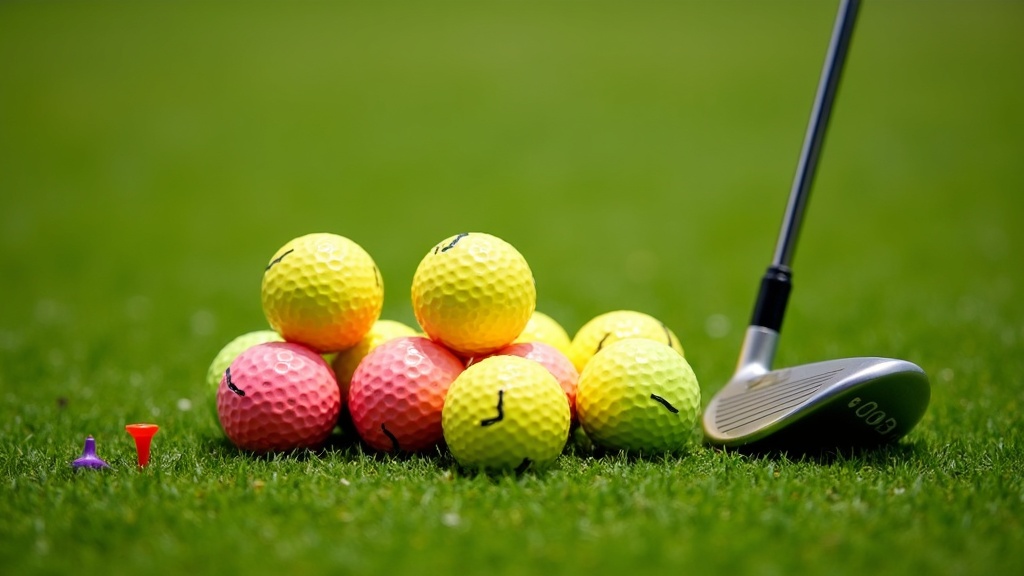Finding a golf ball that gives a boost to your driving distance is something a lot of players get curious about at some point. Whether you’re just trying to impress your buddies off the tee or you want to squeeze every last yard out of your swing, choosing the right ball can actually help your game. I want to share my experience and insights to help you pick the best golf balls for distance, especially if you’re not entirely sure where to start.

Why Distance Matters in Golf Balls
Getting more distance with your driver isn’t just about showing off. If you’re consistently putting your ball further down the fairway, it usually sets up easier second shots and lowers your scores over a round. Manufacturers know this, and they design specific balls with distance in mind by tweaking materials, core technology, and dimple patterns. The tech can honestly get pretty deep, but a lot of it ends up making a noticeable difference for regular players.
The golf ball market is huge, worth billions and growing, so it’s no surprise there are tons of options out there. Each ball brings something different to the table. Finding one that works well with your swing speed and playing style is what really matters if you want to add extra yards.
Understanding What Makes a Ball Go Farther
A lot of golfers (me included, when I first started researching) are surprised at just how much variety goes into modern golf balls. Here’s what actually helps a golf ball travel further:
- Core Construction: The center, or core, of the ball stores and transfers energy from your swing. Softer cores usually give more spin, while firmer cores give more distance by offering more “spring” off the clubface for faster ball speeds.
- Cover Material: Balls with ionomer covers are a popular pick for more distance because they’re a bit harder and lower spinning than the urethane on tour balls. Lower spin sounds counterintuitive, but it’s great for straight, long flights off the tee.
- Dimple Pattern: Those little dimples aren’t just for looks. Their shape and layout help reduce drag, which keeps your ball up in the air longer and pushes it further down the fairway.
Quick List: My Top Golf Balls for Distance
- Titleist Velocity: Designed with distance front and center. It delivers fast ball speed and a high, long carry. Worth checking out if you want something reliable and easy to find online or in stores.
- Callaway Warbird: Delivers serious yardage with its high energy core and a firm feel at impact. It’s affordable, too, so you don’t feel bad if you lose a couple during a round.
- TaylorMade Distance+: As the name hints, this ball targets players looking for a little extra push off the tee. It feels firm and flies high, a combo that’s pretty handy if you need more carry distance.
- Srixon Distance: An underrated option that packs a punch and tends to stay straight on mishits thanks to its smart dimple design.
- Bridgestone e6: Well liked for combining distance and control. It’s got a softer core than most pure distance balls, but still goes a long way, especially if you prefer a lower driver spin.
Most of these balls are easy to find, and honestly, you’ll see gains even with midrange swing speeds. If you shop in local golf outlets or browse online, these options are usually in stock and ready to grab for your next round.
What Golfers Should Think About Before Buying
Getting more distance is fun, but there are a few things worth considering before you settle on a golf ball:
- Swing Speed: Fast swingers get more out of firmer, high compression balls. Slower swingers (like lots of recreational golfers) tend to do better with low compression, softer balls that still launch high.
- Feel Preference: Some distance balls feel super firm, which is fine for tee shots but might not be what you want on the greens. Test a sleeve to see if you like the feel on short chips and putts.
- Spin: Distance balls usually have less spin, which makes them go straight, but you do trade off a bit of stopping power around the green. That’s just how the tech works.
- Price: A big reason I often recommend distance balls is they usually don’t break the bank. Many distance focused golf balls are priced lower than premium models, so you’re not paying extra just to hit it farther.
You might also want to check out colored versions or ones with alignment markers if they help with visibility or setup. Choosing a ball you enjoy looking at and spotting quickly can boost your pace of play and confidence.
Getting the Most from Your Distance Golf Ball
Having the right golf ball helps, but a bit of technique goes a long way too. Here’s what I’ve figured out after plenty of testing and advice from coaches:
- Check Your Driver Setup: Having the right loft on your driver and a good tee height can really make a difference. Most distance focused balls launch higher, so make sure your setup isn’t holding you back.
- Work on Solid Contact: Hitting the sweet spot is what gets you max ball speed. You don’t always have to swing harder; sometimes a smoother swing and better contact is all it takes.
- Ball Position: With most modern drivers, playing the ball just inside your front foot helps launch it higher and makes the most of your ball’s design.
Practicing a better setup helps your ball do its job. Video lessons, launch monitor sessions, or even small adjustments in your swing routine can all show up as longer, straighter drives.
Distance Golf Balls vs. Other Types: What’s Different?
I’ve tried a bunch of ball types, and the differences are clear after a few rounds. Distance balls have a firmer feel and tend to roll out more once they land. That’s awesome for longer par 4s or par 5s, but they won’t bite as hard on wedges or chips.
If you already play a soft tour ball and want more distance, it’s worth trying out a sleeve of a distance focused model for a few rounds. You might be surprised at how much it helps, especially if you play on longer courses.
- Performance for High Handicappers: Distance balls can make golf less frustrating if you’re just learning or enjoy hitting it long. The lower spin helps keep slices and hooks a bit straighter.
- Performance for Better Players: Skilled golfers might notice the trade off in greenside spin, but most still keep a sleeve handy for long, windy courses where roll and carry are more important than wedge control.
Cool Features Found in Modern Distance Balls
Golf tech gets better every year. Some distance balls come with alignment aids printed on the side to help with aiming putts. Others have colored covers that stand out against grass, which seems small but is very helpful when you’re searching the rough. Certain golf balls also include a special coating to repel water, which can actually add distance in wet conditions, especially if you play in the morning or after rain. These little touches, plus improved dimple patterns, give you that next-level cool factor while adding practicality.
My Experience Testing Distance Golf Balls
Switching from a soft, spinny ball to a firmer distance ball changed how I approached longer holes. I didn’t suddenly become a long drive champ, but carries were longer, and I was hitting shorter irons into greens. Even with my average swing speed, launching a Titleist Velocity just felt satisfying. The feeling is addictive when you see your drives leap past your usual landing spots.
I also found that on wet days, distance balls seem to skip and roll more, making up some ground lost to soggy fairways. Around the greens, they do feel firmer, so it took a round or two to adjust my pitching and putting. I noticed that my confidence went up as I repeatedly tracked down my ball further down the fairway. It encouraged me to focus more on tempo than pure speed, resulting in better overall performance.
Common Questions About Golf Balls for Distance
How much extra yardage can you really expect from a distance ball?
Generally, most players will see an extra 5 to 10 yards off the tee, but results vary based on swing speed and conditions. Some players with smoother swings may notice slightly less, but even small yardage bumps make a difference over 18 holes.
Will a distance golf ball help with accuracy?
Distance balls usually spin less, which keeps them straighter. If you slice or hook badly, it won’t totally cure it, but it can minimize the curve a bit.
Are distance golf balls OK for beginners?
Definitely. The forgiveness and extra roll are super helpful for new players, and the lower price is a plus. You won’t have to feel bad losing a few. In fact, using a distance ball as a beginner can quickly show improvements in confidence, especially on wide open holes.
Should you switch balls for different parts of your game?
Some advanced players keep both a distance ball and a tour ball in their bag, but for most folks, sticking with one ball helps keep things consistent. Constantly mixing it up can actually hurt your feel and rhythm, so pick one that matches most of your needs.
Wrapping Up: Which Ball Should You Try First?
Getting more distance from your golf ball is about picking one that fits your swing and feels right to you. Don’t be afraid to test out a few brands or models; most major golf stores sell sleeves or trial packs. I recommend starting with either the Titleist Velocity or Callaway Warbird if you want something you can trust right away.
After a round or two, you’ll get a sense of whether the ball’s benefits suit your style. If you want a little more greenside feel, brands like Bridgestone e6 or Srixon Distance offer a nice middle ground. Either way, tracking drives from the tee and seeing genuine progress adds a lot of fun to the game. Golf balls might seem like a small detail, but picking the right one for distance can bring your whole round up a notch. Give several a shot and see for yourself how much difference it makes the next time you step onto the fairway.
